- Growing Poppy from Seeds
- 1. Choose the right variety
- 2. Prepare the soil
- 3. Sow the seeds
- 4. Water regularly
- 5. Provide sunlight
- 6. Mulch and weed control
- 7. Watch for pests and diseases
- 8. Harvesting and deadheading
- Types of Poppy
- Oriental Poppies
- California Poppies
- Shirley Poppies
- Iceland Poppies
- Varieties of Poppy
- 1. Papaver rhoeas (Common Poppy)
- 2. Papaver orientale (Oriental Poppy)
- 3. Papaver nudicaule (Icelandic Poppy)
- 4. Papaver somniferum (Opium Poppy)
- 5. Meconopsis (Himalayan Blue Poppy)
- Poppy Cultivation Tips
- 1. Choosing the right soil
- 2. Ideal planting time
- 3. Sowing the seeds
- 4. Sunlight requirements
- 5. Watering needs
- 6. Mulching
- 7. Fertilizing
- 8. Deadheading
- 9. Pests and diseases
- 10. Harvesting poppy seeds
- Best Soil for Poppy
- 1. Soil Type
- 2. Soil Preparation
- 3. pH Level
- 4. Drainage
- 5. Nutrient-Rich Soil
- Poppy: Plant Care
- Watering
- Soil
- Sunlight
- Fertilizing
- Support
- Deadheading
- Pests and Diseases
- Winter Care
- Harvesting and Using Poppies
- Using Poppy Seeds
- Types of Poppy Seeds
- Your Site Name
- About Us
- Gardening Tips
- Plant Care Guides
- Community Forum
- Shop
- Contact Us
- Join Our Newsletter
- Questions and Answers:
- How do I grow poppy from seeds?
- What are the different types and varieties of poppy?
- When is the best time to plant poppy seeds?
- Do poppies require a lot of maintenance?
- Can I grow poppies in containers or pots?
- Videos: How to make Wild Lettuce CONCENTRATED extract (for pain & sleep)
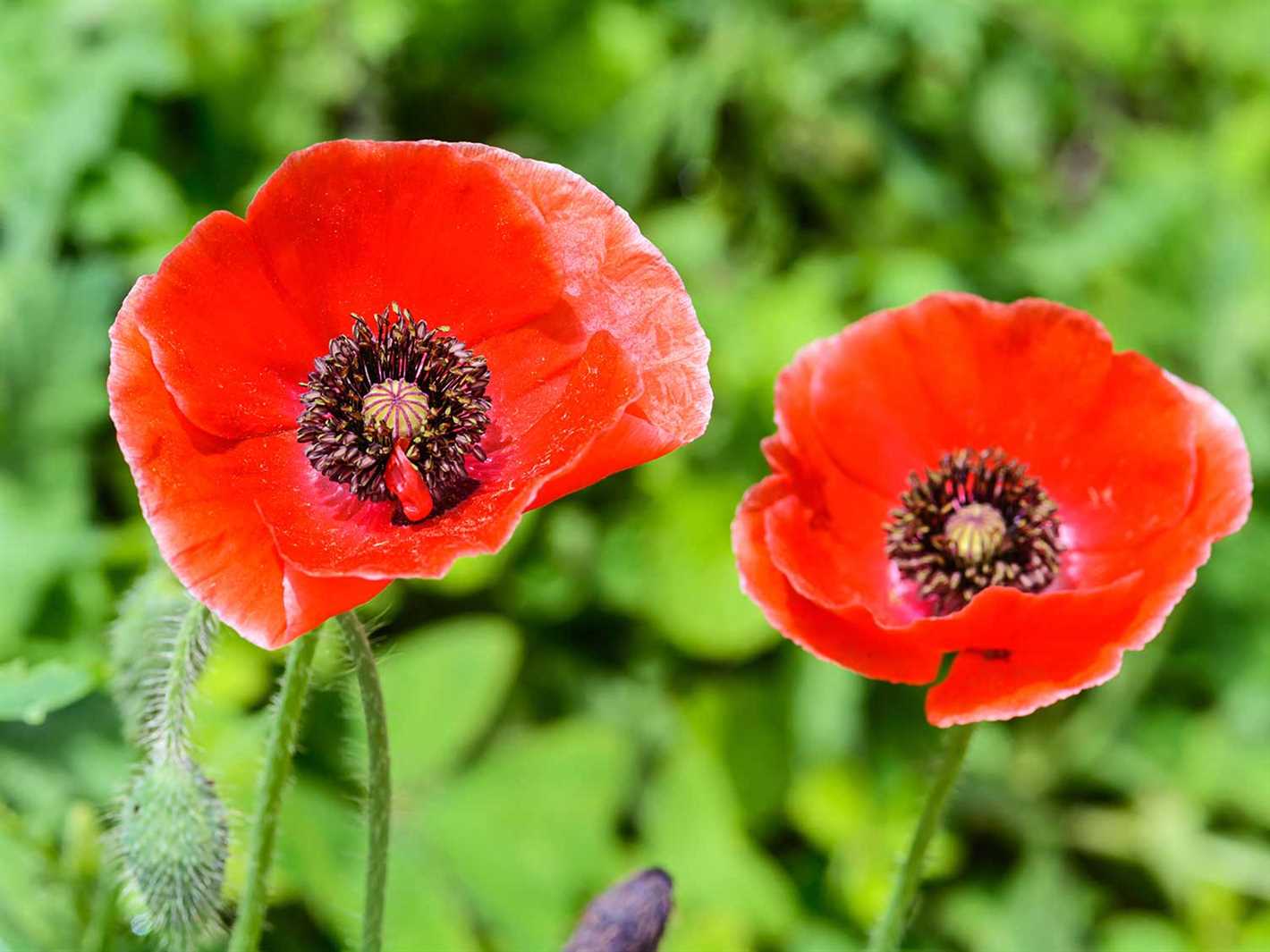
Poppy flowers are a beautiful addition to any garden, with their vibrant colors and delicate petals. They are also relatively easy to grow from seeds, making them a popular choice for beginner gardeners. In this article, we will explore the different types and varieties of poppies, as well as provide tips on how to successfully grow them in your own garden.
There are several different types of poppies, each with its own unique characteristics. The most common type is the Oriental poppy, known for its large, showy flowers in shades of red, pink, and orange. Another popular type is the California poppy, which has smaller flowers in shades of yellow, orange, and red. Other types include the Iceland poppy, the Himalayan blue poppy, and the Flanders poppy, among others.
When it comes to growing poppies from seeds, it is important to choose a sunny location with well-drained soil. Poppies prefer cool temperatures, so planting them in the spring or fall is recommended. Before planting, prepare the soil by loosening it and removing any weeds. Scatter the seeds on the soil surface and lightly cover them with a thin layer of soil. Water the seeds gently and keep the soil moist until germination occurs.
Once the poppies have sprouted, thin them out to allow enough space for each plant to grow. Poppies do not require much maintenance, but they do benefit from regular watering during dry periods. Deadhead the flowers as they fade to encourage new blooms. At the end of the growing season, allow some of the poppy seedheads to dry on the plants. These can be collected and saved for sowing the following year.
In conclusion, growing poppies from seeds is a rewarding and relatively easy process. With their wide range of types and varieties, there is a poppy flower to suit every garden. By following the tips mentioned above, you can enjoy the beauty of these delicate flowers in your own backyard.
Growing Poppy from Seeds
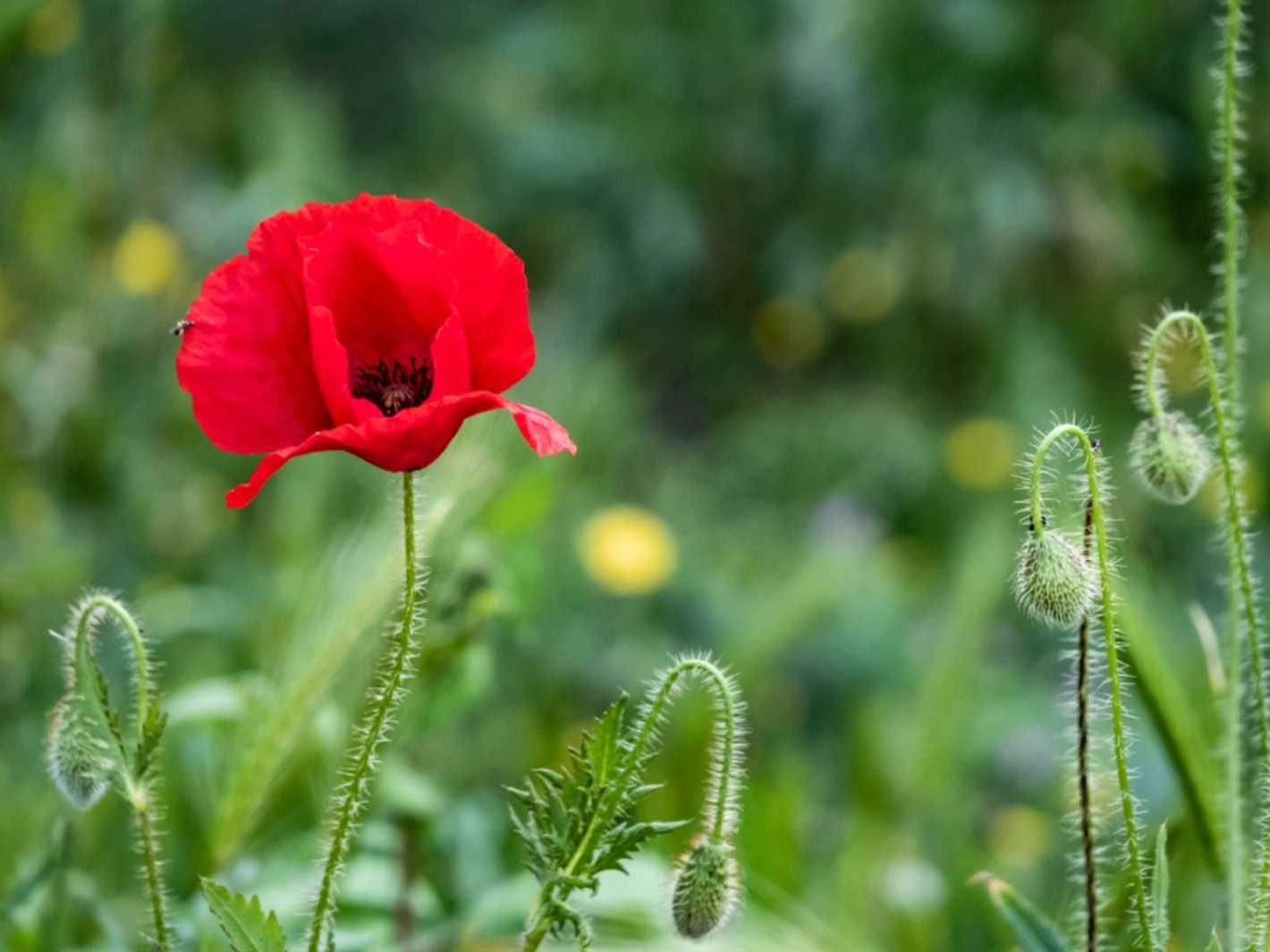

Poppy flowers are a beautiful addition to any garden, and growing them from seeds can be a rewarding and enjoyable process. Here are some tips and steps to help you successfully grow poppy from seeds:
1. Choose the right variety
There are several different varieties of poppy flowers, each with its own unique characteristics. Some popular varieties include the Shirley poppy, the Iceland poppy, and the Oriental poppy. Research the different varieties and choose the one that best suits your preferences and growing conditions.
2. Prepare the soil
Poppy flowers prefer well-drained soil with a pH level between 6.0 and 7.0. Prepare the soil by removing any weeds or debris and loosening it with a garden fork or tiller. Mix in organic matter, such as compost or aged manure, to improve the soil’s fertility and drainage.
3. Sow the seeds
Poppy seeds are very small, so it’s best to mix them with fine sand or vermiculite to help distribute them evenly. Sow the seeds on the prepared soil surface and lightly press them into the soil, or cover them with a thin layer of soil or sand. Space the seeds according to the instructions on the seed packet, as different varieties may require different spacing.
4. Water regularly
Keep the soil moist by watering regularly, especially during dry periods. Avoid overwatering, as poppy plants can be sensitive to waterlogging. Use a watering can or a gentle spray from a hose to prevent the seeds from being washed away.
5. Provide sunlight
Poppy flowers need full sun to thrive, so choose a sunny location for planting. Make sure the plants receive at least 6 hours of direct sunlight each day. If you’re planting them in a container, place it in a spot that gets ample sunlight.
6. Mulch and weed control
Apply a layer of organic mulch, such as straw or wood chips, around the base of the poppy plants. This will help conserve moisture, suppress weed growth, and provide insulation to the roots. Regularly check for weeds and remove them to prevent competition for nutrients and water.
7. Watch for pests and diseases
Poppy plants are generally resistant to pests and diseases, but they can still be affected by aphids, slugs, and powdery mildew. Monitor your plants regularly and take necessary measures to control any infestations or diseases that may occur.
8. Harvesting and deadheading
Depending on the variety, poppy flowers will bloom in late spring or early summer. Once the flowers have bloomed and the petals have fallen off, you can harvest the seed pods by cutting them from the plant. To encourage more blooms, deadhead the flowers by removing the faded ones.
By following these steps, you can enjoy the beauty of poppy flowers in your own garden. Just remember to choose the right variety, prepare the soil, sow the seeds correctly, provide adequate water and sunlight, and maintain proper care throughout the growing season.
Types of Poppy
There are several different types and varieties of poppy flowers that you can grow in your garden. Here are some of the most popular ones:
Oriental Poppies
- Originating from the Middle East and Europe, Oriental poppies are known for their large, vibrant flowers.
- They come in a range of colors, including shades of red, pink, orange, and white.
- Their blooms can reach up to 6 inches (15 cm) in diameter and have a velvety texture.
- Oriental poppies prefer full sun and well-drained soil.
California Poppies
- California poppies are native to the western parts of North America.
- They have bright orange, yellow, or red cup-shaped flowers.
- These poppies are low-maintenance and can thrive in dry and poor soil conditions.
- They are also great for attracting bees, butterflies, and other pollinators to your garden.
Shirley Poppies
- Shirley poppies are a popular garden variety that originated in England.
- They have delicate, crepe-like petals in a range of pastel colors, including pink, white, and lavender.
- These poppies are easy to grow and can self-seed, meaning they will come back year after year.
- Shirley poppies are perfect for adding a touch of elegance to any garden or floral arrangement.
Iceland Poppies
- Iceland poppies, also known as Arctic poppies, are native to cooler regions of Europe and North America.
- They have delicate, papery flowers in shades of white, yellow, orange, and pink.
- Iceland poppies are cold-hardy and can tolerate frost.
- They are often grown as annuals or biennials, but they can also be perennial in some climates.
These are just a few examples of the many types of poppies available to gardeners. Each type has its own unique characteristics and growing requirements, so be sure to choose the ones that are best suited to your garden and climate.
Varieties of Poppy
Poppy plants come in a variety of colors, sizes, and shapes. Here are some popular varieties of poppy:
1. Papaver rhoeas (Common Poppy)
- The common poppy is one of the most well-known varieties.
- It has bright red petals with a black or dark spot at the base.
- It is an annual plant that is often used in wildflower meadows or for roadside plantings.
2. Papaver orientale (Oriental Poppy)
- Oriental poppies are perennial plants and are known for their large, showy flowers.
- They come in a range of colors including red, orange, pink, and white.
- Their flowers have a crepe-paper-like texture and typically have a dark center.
3. Papaver nudicaule (Icelandic Poppy)
- Icelandic poppies are known for their delicate and brightly colored flowers.
- They come in shades of yellow, orange, pink, and white.
- These poppies are typically grown as annuals or biennials.
4. Papaver somniferum (Opium Poppy)
- The opium poppy is known for its medicinal properties.
- It has large, showy flowers that come in a variety of colors including white, pink, purple, and red.
- The seeds of this poppy are often used in baking and cooking.
5. Meconopsis (Himalayan Blue Poppy)
- Himalayan blue poppies are known for their striking blue flowers.
- They are difficult to grow and require specific conditions, making them prized by collectors and garden enthusiasts.
- These poppies are typically grown as perennials in cool, moist climates.
These are just a few examples of the many varieties of poppy available. Each variety has its own unique beauty and characteristics, making poppies a popular choice for gardens and floral arrangements.
Poppy Cultivation Tips
1. Choosing the right soil
Poppy plants prefer well-drained soil that is rich in nutrients. They thrive in soil that has a pH level between 6.0 and 7.5. Before planting poppy seeds, make sure to prepare the soil by removing any weeds and adding organic matter.
2. Ideal planting time
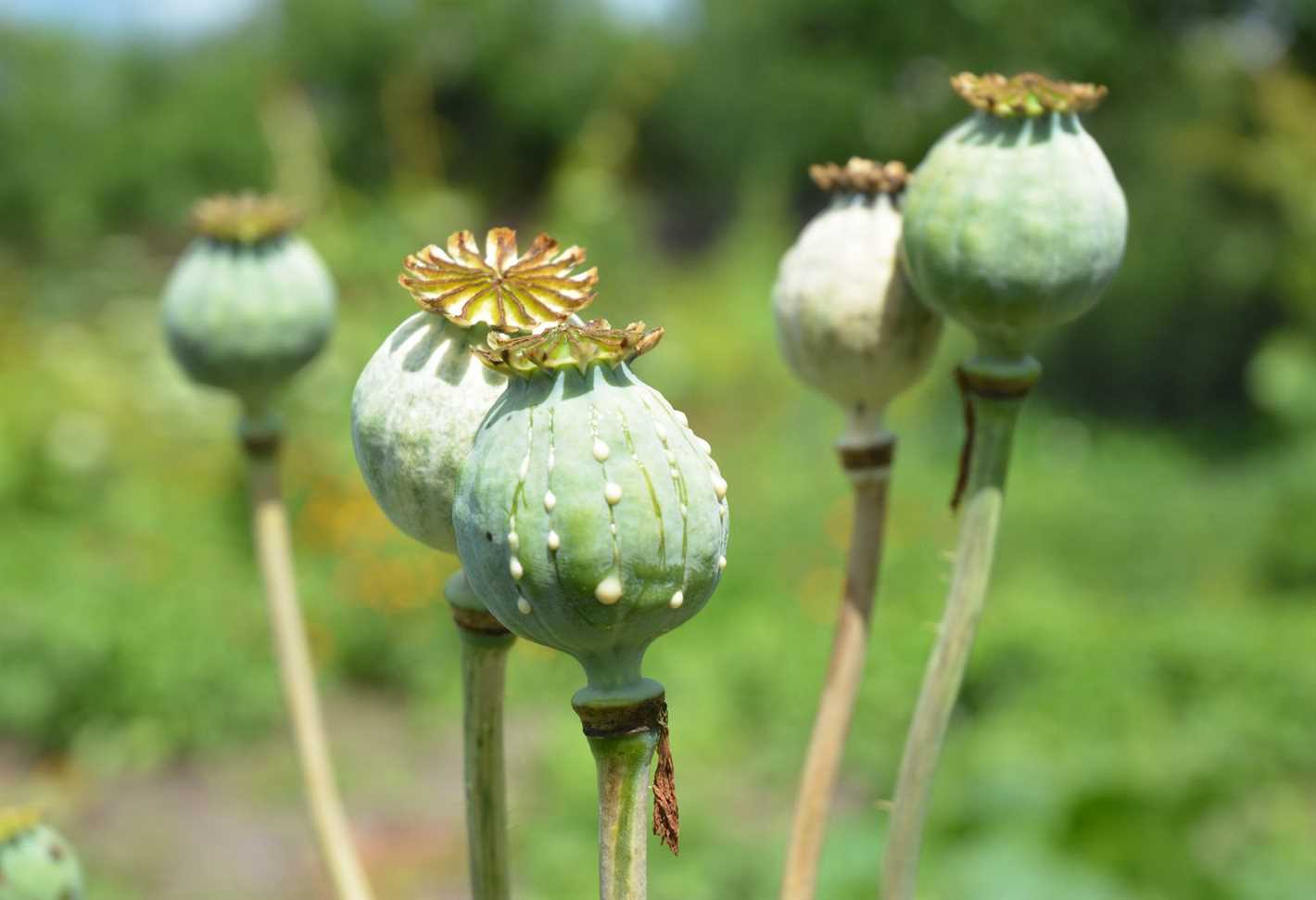

The best time to plant poppy seeds is in early spring or late fall. Poppy plants are hardy and can tolerate cool temperatures. It is important to plant the seeds when the soil is moist, but not waterlogged.
3. Sowing the seeds
Poppy seeds are tiny and should be sown directly into the soil without covering them. Scatter the seeds on the prepared soil and gently press them into the ground. Keep the soil evenly moist until the seeds germinate, which usually takes around 10 to 20 days.
4. Sunlight requirements
Poppy plants need plenty of sunlight to grow and bloom. They require at least 6 to 8 hours of direct sunlight every day. Choose a location in your garden that receives full sun exposure for the best results.
5. Watering needs
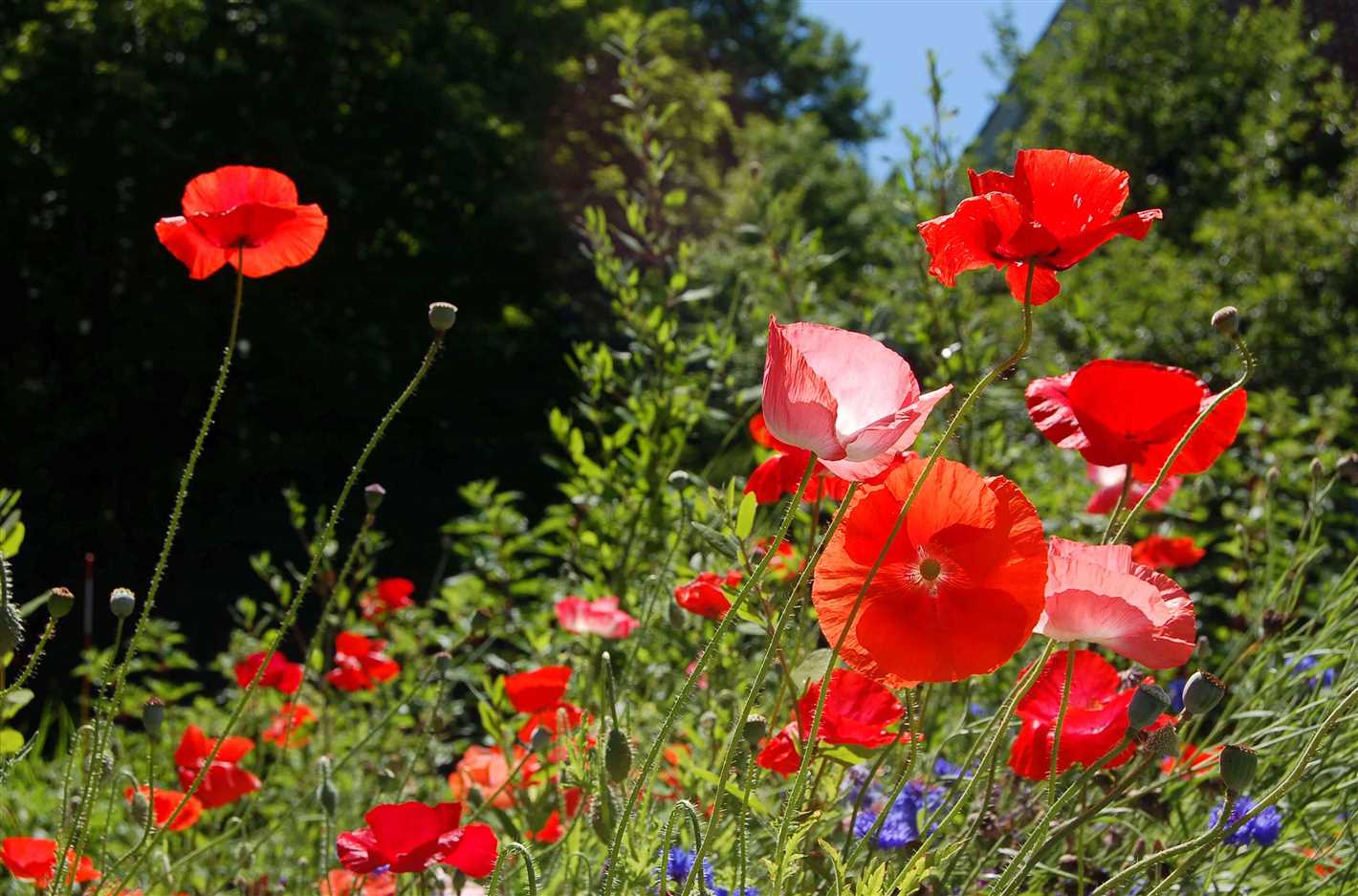

Poppy plants require regular watering, especially during dry spells. However, it is important to avoid overwatering as it can lead to root rot. Allow the top inch of soil to dry out between waterings.
6. Mulching
Applying a layer of organic mulch around the base of poppy plants can help retain moisture in the soil and suppress weed growth. Use a thin layer of straw or shredded leaves as mulch, making sure to leave space around the stems to prevent rotting.
7. Fertilizing
Poppy plants do not require much fertilization. However, adding a balanced, slow-release fertilizer once or twice during the growing season can promote healthy growth and blooming. Be cautious not to over-fertilize, as it can lead to excessive foliage growth with fewer flowers.
8. Deadheading
Removing faded flowers, a process known as deadheading, can help promote continuous blooming and prevent the plant from going to seed too quickly. Simply pinch off the spent flowers, taking care not to damage the stem.
9. Pests and diseases
Poppy plants are relatively resistant to pests and diseases. However, they can occasionally be affected by aphids, slugs, or powdery mildew. Monitor your plants regularly and take appropriate measures to control any infestations or infections.
10. Harvesting poppy seeds
You can harvest poppy seeds by allowing the seed pods to dry on the plant. Once the pods turn brown and start to crack open, carefully cut off the pods and collect the seeds. Store the seeds in a cool, dry place for future use.
| Tips | Details |
|---|---|
| Soil | Well-drained soil, pH 6.0-7.5 |
| Planting Time | Early spring or late fall |
| Sowing | Sow seeds directly, press gently into the soil |
| Sunlight | 6-8 hours of direct sunlight |
| Watering | Regular watering, avoid overwatering |
| Mulching | Apply organic mulch around the base of plants |
| Fertilizing | Use balanced, slow-release fertilizer sparingly |
| Deadheading | Remove faded flowers to promote blooming |
| Pests and Diseases | Monitor and control infestations or infections |
| Harvesting | Allow seed pods to dry on the plant, collect seeds |
Best Soil for Poppy
Growing poppies from seeds requires a well-draining soil that is loose and fertile. The ideal soil for poppies should have a pH level between 6.0 and 7.5, which is slightly acidic to neutral. Here is a guide to help you create the best soil conditions for growing healthy and vibrant poppy plants:
1. Soil Type
Poppy plants prefer well-draining soil, so avoid heavy clay or compacted soil that can retain too much moisture. A sandy loam soil or a loamy soil with good drainage is ideal for poppies.
2. Soil Preparation
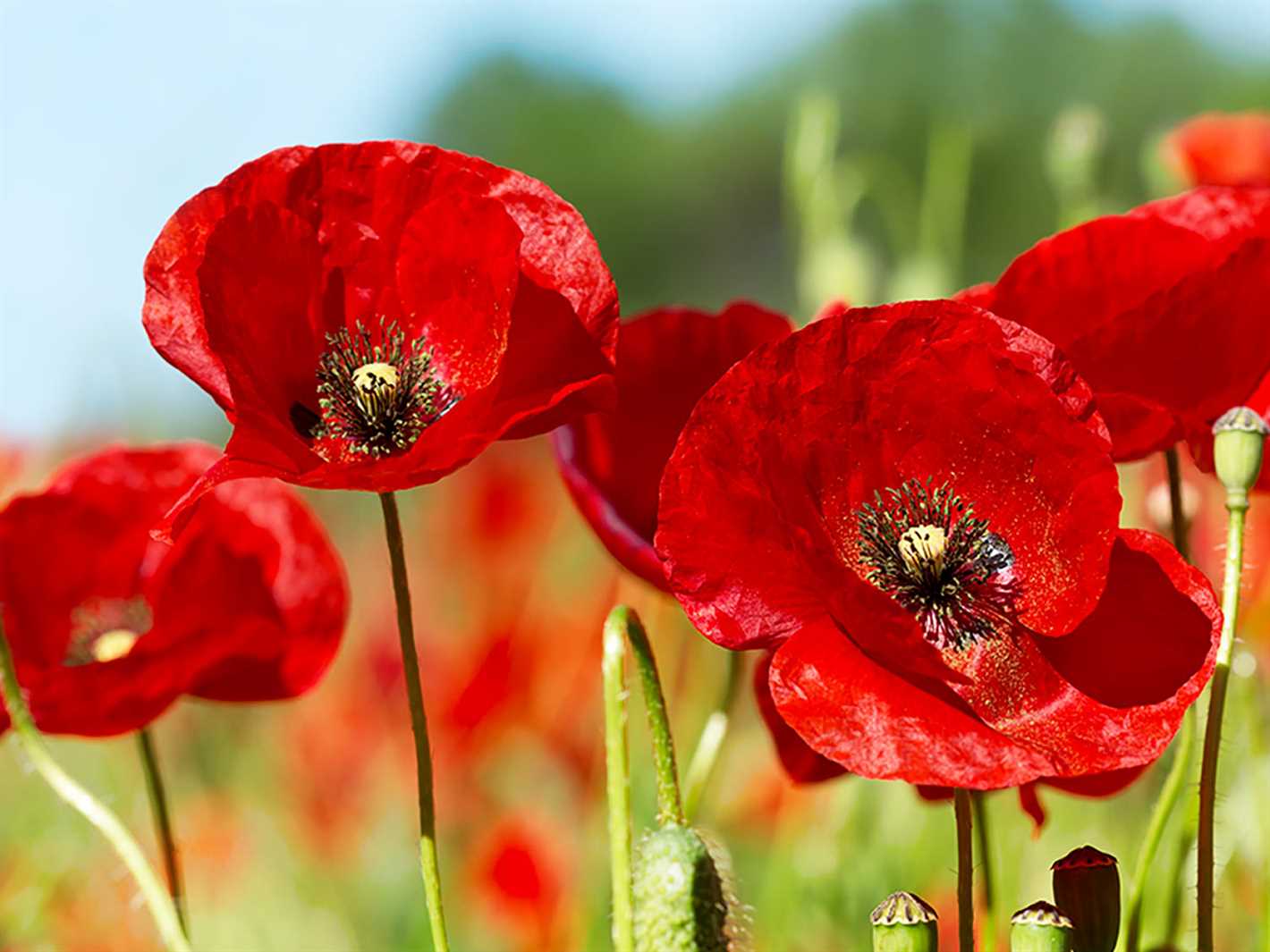

Before planting poppy seeds, it is important to prepare the soil properly. Start by removing any weeds, rocks, or debris from the planting area. Use a garden fork or tiller to loosen the soil to a depth of 8-10 inches. Incorporate organic matter such as compost or well-rotted manure to improve soil fertility and drainage.
3. pH Level
Test the soil pH using a soil testing kit. Poppies prefer slightly acidic to neutral soil, so if the pH is outside the optimal range of 6.0-7.5, you may need to amend the soil. Add lime to raise the pH if it is too acidic or sulfur to lower the pH if it is too alkaline.
4. Drainage
Ensure proper drainage by avoiding areas with heavy clay or compacted soil. If you have poor drainage in your garden, you can improve it by amending the soil with sand or organic matter to increase porosity. This will help prevent waterlogging and root rot.
5. Nutrient-Rich Soil
Poppies thrive in nutrient-rich soil. Incorporate organic matter such as compost or well-rotted manure into the soil before planting to improve its fertility. Additionally, you can add a balanced slow-release fertilizer containing nitrogen, phosphorus, and potassium according to package instructions.
Remember to water your poppy plants regularly, providing enough moisture without overwatering. A well-maintained soil with proper drainage and fertility will provide the best conditions for your poppy plants to grow and flourish.
Poppy: Plant Care
Watering
Poppy plants require regular watering, especially during dry periods. However, be careful not to overwater as this can cause root rot. It is best to water the plants in the morning or evening to minimize evaporation.
- Water the plants deeply, ensuring the soil is evenly moist but not waterlogged.
- Avoid watering the leaves or flowers to prevent fungal diseases.
- Reduce watering in cooler months when the plant is dormant.
Soil
Poppy plants prefer well-draining soil that is slightly acidic to neutral. They do not tolerate heavy or waterlogged soil, as it can lead to root rot. Here are some tips for preparing the soil:
- Loosen the soil and remove any weeds or debris before planting.
- Add organic matter, such as compost or well-rotted manure, to improve drainage and fertility.
- Test the soil pH and make adjustments if necessary to ensure it falls within the preferred range of 6.0 to 7.0.
Sunlight
Poppy plants thrive in full sun, receiving at least 6 to 8 hours of direct sunlight per day. Adequate sunlight promotes healthy growth, strong stems, and vibrant blooms. Make sure to choose a sunny location for planting your poppies.
Fertilizing
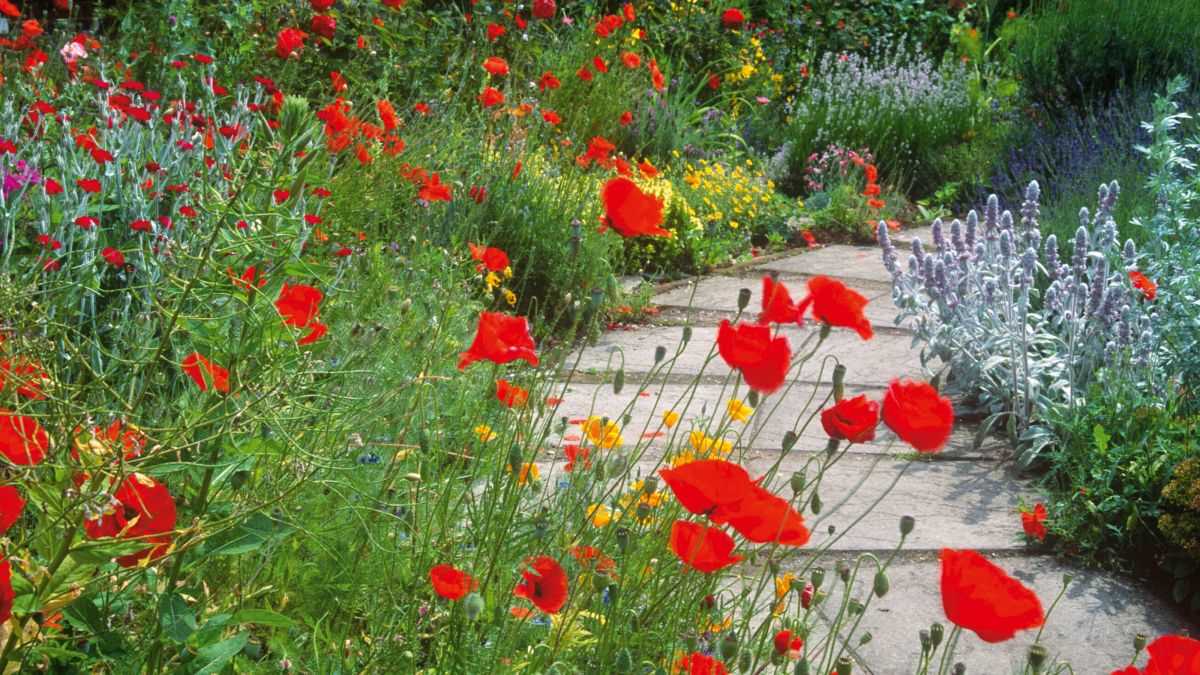

Poppy plants do not require frequent fertilization, but a single application of a balanced slow-release fertilizer in early spring can promote better growth and blooming. Use a fertilizer with equal or close to equal amounts of nitrogen, phosphorus, and potassium, following the instructions on the package for application rates.
Support
Some poppy varieties may require support, especially if they have large flowers that may cause the stems to bend or break. Consider providing support in the form of stakes or cages to keep the plants upright and prevent damage.
Deadheading
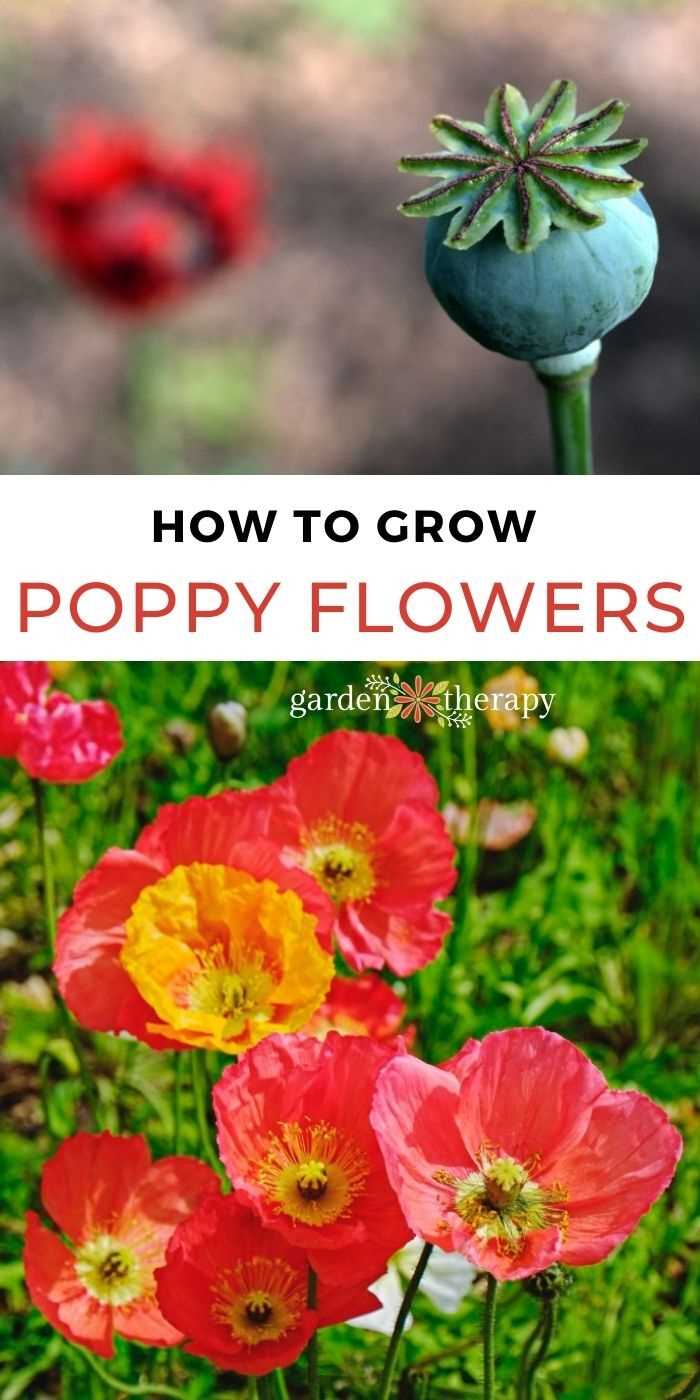

To encourage continuous blooming, regularly deadhead the spent flowers by gently removing them at the base of the stem. This will prevent seed formation and redirect the plant’s energy into producing more flowers.
Pests and Diseases
While poppies are generally resistant to pests and diseases, they may occasionally be affected by aphids, slugs, or fungal diseases. Here are some general tips for pest and disease prevention:
- Monitor your plants regularly for signs of pests or diseases.
- Remove any affected leaves or plants to prevent the spread of disease.
- Use organic or chemical controls as necessary, following the instructions on the package.
Winter Care
Poppy plants may not survive harsh winter conditions, especially in colder climates. Take these steps to protect your poppies during the winter:
- Cut back the plant to ground level after the first frost.
- Cover the plant with a thick layer of mulch to insulate the roots.
- In colder regions, consider growing poppies as annuals or in containers that can be brought indoors during the winter.
Harvesting and Using Poppies
Once your poppy plants have bloomed and the petals have fallen, it’s time to harvest the seeds. The seeds are found in the seed pods, which are mature when they turn a brownish color and feel dry and brittle to the touch.
To harvest the seeds, you can gently shake the seed pods and collect the fallen seeds. Alternatively, you can cut the seed pods from the plant and place them in a paper bag. Hang the bag upside down in a cool, dry place for a few weeks to allow the pods to fully dry and release the seeds.
Once you have harvested the seeds, you can store them in an airtight container in a cool, dark place until you are ready to use them.
Using Poppy Seeds
Poppy seeds are commonly used as a culinary ingredient in a variety of dishes. They have a mild, nutty flavor and can add texture and visual interest to your recipes.
Here are some ideas for using poppy seeds in your cooking:
- Sprinkle them on top of breads, muffins, or scones before baking for added crunch and flavor.
- Add them to dressings and marinades to give a subtle pop of flavor.
- Include them in homemade granola or trail mix for a nutritious snack.
- Use them as a topping for salads or roasted vegetables.
- Incorporate them into desserts such as cakes, cookies, and pastries for a unique twist.
Types of Poppy Seeds
There are several different types of poppy seeds, each with its own unique characteristics and culinary uses:
| Type | Description |
|---|---|
| Opium Poppy Seeds | These are the most common type of poppy seeds and are typically used for culinary purposes. They have a dark blue-black color. |
| White Poppy Seeds | These seeds have a lighter color and a slightly sweeter flavor compared to opium poppy seeds. They are commonly used in Indian and Middle Eastern cuisines. |
| Red Poppy Seeds | These seeds have a reddish-brown color and a slightly stronger flavor. They are often used in Eastern European cooking. |
| Blue Poppy Seeds | These seeds have a bluish-gray color and a milder flavor. They are commonly used in Asian cuisines. |
When using different types of poppy seeds, keep in mind that their flavor and appearance may vary, so it’s important to choose the type that best suits your recipe.
Whether you’re using poppy seeds for their culinary properties or simply enjoying the beauty of poppy flowers in your garden, growing and harvesting poppies can be a rewarding experience. Experiment with different varieties and explore the many ways you can incorporate poppies into your life.
Your Site Name
About Us
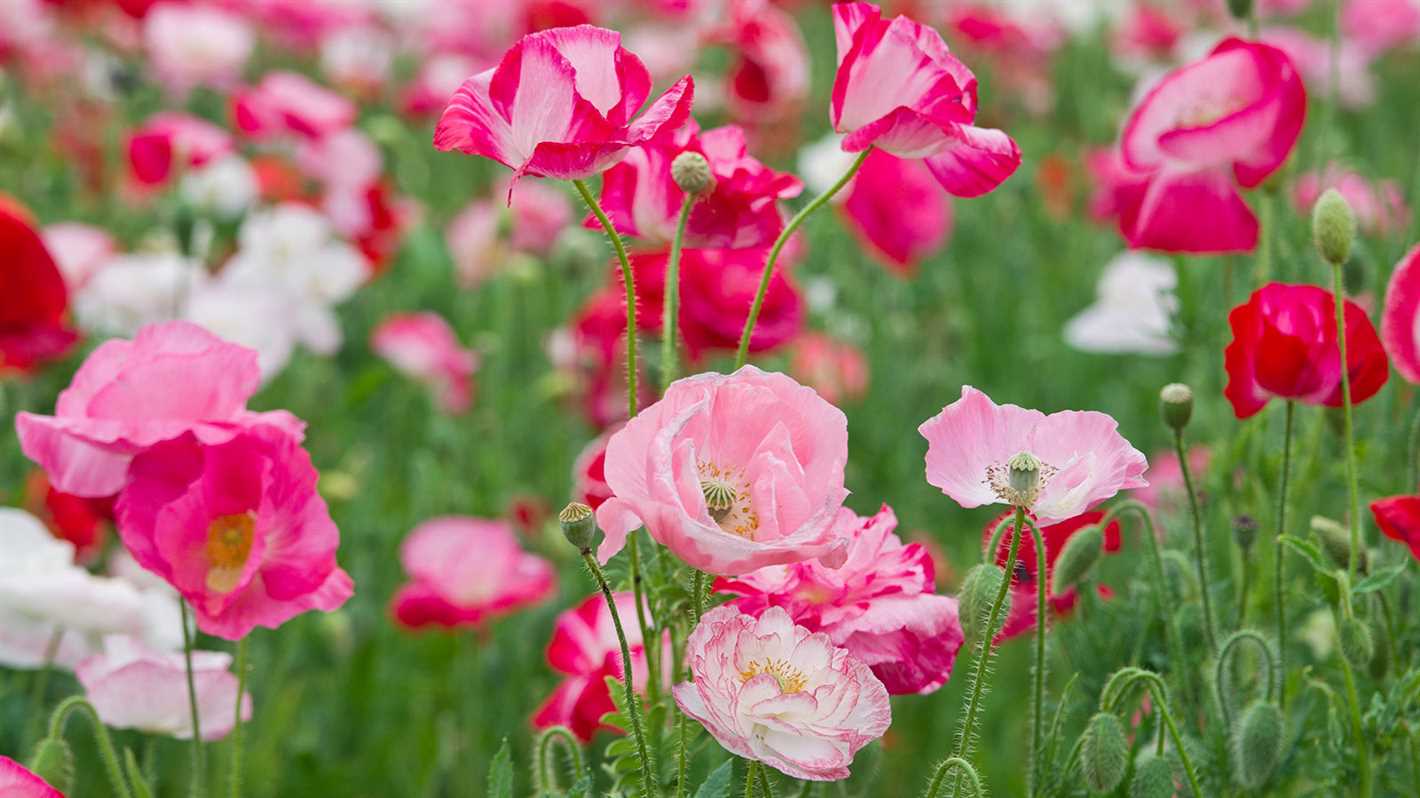

Welcome to Your Site Name, your ultimate resource for all things gardening! Whether you’re a seasoned gardener or just starting out, we have the information and tips you need to create a beautiful and thriving garden. Our team of expert gardeners is constantly researching and writing articles to help you grow and care for a wide variety of plants. From flowers to vegetables, we cover it all.
Gardening Tips
At Your Site Name, we understand that gardening can be both rewarding and challenging. That’s why we offer a wide range of gardening tips to help you succeed. Whether you’re looking for advice on how to start a garden, tips for planting seeds, or information on how to care for specific plants, we have you covered.
Our tips are broken down into easy-to-follow steps, so even beginners can feel confident in their gardening abilities. We also provide information on common gardening issues, such as pests and diseases, and offer solutions to help you eliminate them.
Plant Care Guides
In addition to our gardening tips, we also offer detailed plant care guides. These guides provide in-depth information on how to care for specific types of plants, such as roses, succulents, and fruit trees. We cover everything from planting and watering to pruning and fertilizing.
Our plant care guides include helpful illustrations and step-by-step instructions to make it easy for you to follow along. Whether you’re a beginner or an experienced gardener, our guides will help you keep your plants healthy and thriving.
Community Forum
At Your Site Name, we believe that gardening is not only a personal experience, but a community endeavor. That’s why we offer a community forum where gardeners from all over can come together to share their experiences, ask questions, and offer advice.
In our forum, you can connect with fellow gardeners, learn from their experiences, and get answers to your burning gardening questions. It’s a great place to find inspiration, make new friends, and become a part of the gardening community.
Shop
Looking for high-quality gardening tools, seeds, or plants? Our shop has you covered. We offer a wide range of gardening products to help you take your gardening to the next level.
From premium soil and fertilizers to stylish planters and garden decor, our shop is stocked with everything you need to create a beautiful garden. We only carry products that we trust and use ourselves, so you can shop with confidence knowing that you’re getting the best.
Contact Us
Have a question or feedback for us? We’d love to hear from you! Visit our contact page to get in touch with our team. We’re always here to help and are dedicated to providing the best gardening resources possible.
Join Our Newsletter
Don’t want to miss out on the latest gardening tips, plant care guides, and special offers? Sign up for our newsletter today! It’s the best way to stay updated on all things gardening and never miss an update from Your Site Name.
We promise to only send you valuable and relevant content, so you can unsubscribe at any time if you decide it’s not for you. Join our gardening community today!
Questions and Answers:
How do I grow poppy from seeds?
To grow poppy from seeds, start by selecting a location with full sun. Prepare the soil by removing any weeds and loosening it with a garden fork. Sow the seeds directly into the soil, making sure to space them about 6-8 inches apart. Cover the seeds with a thin layer of soil and lightly water them. Keep the soil moist, but not saturated, until the seeds germinate. Within a few weeks, you should start to see the poppy plants sprouting.
What are the different types and varieties of poppy?
There are many different types and varieties of poppy. Some popular varieties include the Oriental poppy, California poppy, Icelandic poppy, and Shirley poppy. Oriental poppies are known for their large, vibrant flowers, while California poppies have delicate, papery flowers in shades of orange and yellow. Icelandic poppies come in a range of colors, including white, yellow, and pink, and have feathery petals. Shirley poppies are known for their ruffled petals and come in a variety of colors.
When is the best time to plant poppy seeds?
The best time to plant poppy seeds is in early spring, after the last frost date. Poppy seeds require cool temperatures to germinate, so it’s important to plant them before the weather gets too warm. If you live in a warmer climate, you can also plant poppy seeds in the fall for spring blooms. Just make sure to choose a location with full sun and well-draining soil.
Do poppies require a lot of maintenance?
Poppies are relatively low-maintenance plants. Once they are established, they don’t require much care. However, it’s important to keep the soil moist while the seeds are germinating, and to water the plants regularly during dry periods. Poppies don’t like wet feet, so make sure the soil has good drainage. You may also need to stake taller varieties to prevent them from flopping over. Other than that, poppies are fairly easy to grow and require minimal maintenance.
Can I grow poppies in containers or pots?
Yes, you can grow poppies in containers or pots. Choose a container that is at least 12 inches deep, as poppy plants have long taproots. Fill the container with well-draining potting soil and sow the seeds directly into the soil. Water the seeds lightly and place the container in a location with full sun. Keep the soil moist, but not saturated, until the seeds germinate. Poppies grown in containers may require more frequent watering than those grown in the ground, as containers tend to dry out faster.







